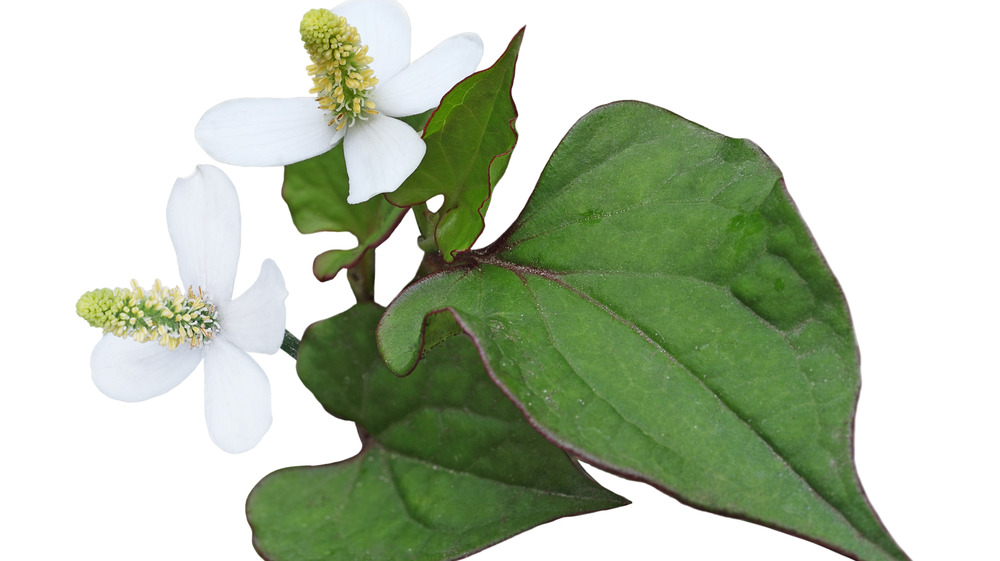The Truth About Heartleaf
If there's one thing to know about K-beauty, it's that it's always ahead of the curve. Korean skincare regimens and products are considered the best of the best by dermatologists and celebrities alike, including Drew Barrymore (who prefers natural beauty treatments) and Kate Hudson (who loves gold-foil face masks, per Insider).
The most recent K-beauty obsession? Heartleaf. Known as houttuynia cordata in the scientific community, and Chinese lizard tale by others, this nutrient-dense plant is native to Northeast India and China. It was traditionally used as medicine to treat sinusitis and inflammation in the body, according to a study published in the Pharmacognosy Review.
Now, heartleaf is being used in skincare products for its ability to reduce inflammation and hydrate the skin. Note: The leafy green is not to be confused with the weight-loss supplement, heartleaf sida (scientific name: sida cordifolia), which has been banned in the U.S. for causing serious side effects, including seizure and stroke, via RxList.
The best ways to include heartleaf in your skincare routine
What makes heartleaf so special? Researchers from the Pharmacognosy Review found that the antioxidant-rich green has a wealth of therapeutic properties when ingested; it is anti-viral, anti-bacterial, anti-allergic, and anti-inflammatory. As a topical treatment, heartleaf has also been used to treat snake bites and skin ailments including acne and atopic dermatitis, via the Chonnam Medical Journal.
As both a humectant (moisturizing) and soothing ingredient, it's no wonder that K-beauty fans are running to buy heartleaf face masks, toners, and creams. However, you may want to exercise caution before you spread it all over your skin. Researchers from the Journal of Evidence-Based Medicine found that the plant can cause severe allergic reactions when injected. In addition, you may not want to use heartleaf if you have rosacea, bad eczema, or very red skin, dermatologist Debra Jaliman told PureWow.
Before using any heartleaf product, be sure to perform a patch test. Dab a small amount of the product on an area of the skin near your face, such as your neck, the underside of your jaw, or behind your ear, according to Glamour. If no signs of irritation appear after 24 hours or so, you should be free to use the product as you wish and reap the benefits of this powerful K-beauty ingredient.

